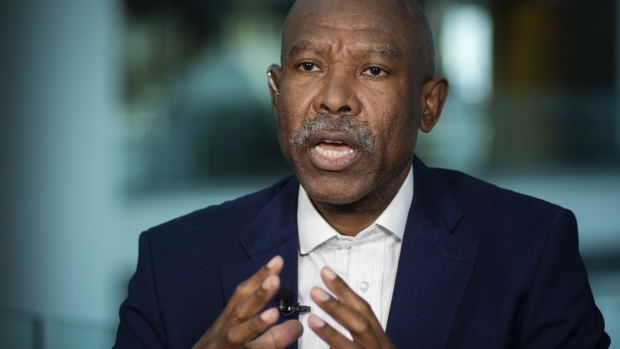Oct 4, 2022
South African Central Bank Sees Need to Raise Key Rate Further
, Bloomberg News

(Bloomberg) -- South Africa’s central bank sees a need to continue raising borrowing costs, even after hiking interest rates faster than its modeling suggested.
The monetary policy committee raised the benchmark repurchase rate by three-quarters of a percentage point Sept. 22. That was faster than the bank’s quarterly projection model indicated after its July meeting, when it showed two increases of 25 basis points each through the first quarter of next year, the South African Reserve Bank said Tuesday in its six-monthly Monetary Policy Review.
While the pace of tightening reflected upside risks to the inflation outlook, an environment of heightened uncertainty with rising costs and domestic price pressures that have “intensified sharply” mean policy makers may still need to raise interest rates to “levels that are consistent with a stable and lower inflation rate,” it said.
At 6.25%, the benchmark matches its January 2020 level -- before stop-start coronavirus lockdowns and supply-chain disruptions prompted unprecedented easing -- compared with an average rate of 6.64% in the year before the pandemic struck, central bank data show.
The South African Reserve Bank responded to the worst global inflation shock in a generation quicker than several of peers and has raised the policy rate by 275 basis points since November. Its modeling implies year-end rates of 6.36% in 2023 and 6.76% in 2024. Governor Lesetja Kganyago has repeatedly said the model is simply a broad policy guide.
‘Virtuous Cycle’
The central bank prefers to anchor inflation expectations close to the 4.5% midpoint of its target range. While the change in the headline consumer-price index breached the target ceiling for a fourth-straight month in August, economists predict the prior month’s 7.8% outcome is likely to be the peak of the cycle.
Lower inflation and ultimately lower interest rates could be achieved by implementing structural reforms that boost productivity growth, the Reserve Bank said.
Reforms aimed at alleviating South Africa’s energy crisis could raise real private investment in the energy sector by as much as 15% per year from 2023 to 2025 and raise economic growth by about 0.9 percentage points over the first year, the central bank said.
“Investment in energy has the potential to crowd in other productive investment, creating a virtuous cycle,” the bank said.
State-owned power utility Eskom Holdings SOC Ltd., which produces almost all of South Africa’s electricity, can’t meet demand and has imposed a record 120 days of blackouts so far in 2022, according to Bloomberg calculations.
Load-shedding, a local term for outages, is projected to shave 1 percentage point off economic growth this year. The bank lowered its gross domestic product growth forecast to 1.9% from 2% in September.
©2022 Bloomberg L.P.





